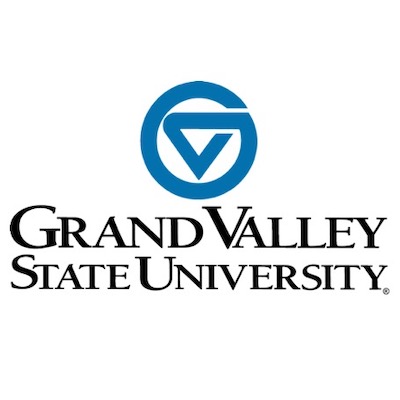Great Lakes Integrated Mesocosm Research (GLIMR)
Dates: 2022
Steering Committee: Lead: Alan Steinman (Grand Valley State University AWRI); Co-leads: Casey Godwin (CIGLR); Craig Stow (NOAA GLERL); Hank Vanderploeg (NOAA GLERL);Ed Rutherford (NOAA GLERL); Donna Kashian (Wayne State University); Don Uzarski (Central Michigan University)
CIGLR Research Theme: Healthy Communities
 Description: The challenges facing the Great Lakes Basin are well-documented and vary both longitudinally and latitudinally. Hence, addressing these challenges across the entire Great Lakes Basin (GLB) requires a coordinated and unified research agenda, and one which capitalizes on this spatial variability. Multiple approaches can be adopted as part of this research agenda, including modeling, remote sensing, and large-scale experimental manipulations to name a few, and each has its own advantages and limitations. The approach we propose to examine in this Summit is the coordinated and standardized use of mesocosm facilities across the GLB.
Description: The challenges facing the Great Lakes Basin are well-documented and vary both longitudinally and latitudinally. Hence, addressing these challenges across the entire Great Lakes Basin (GLB) requires a coordinated and unified research agenda, and one which capitalizes on this spatial variability. Multiple approaches can be adopted as part of this research agenda, including modeling, remote sensing, and large-scale experimental manipulations to name a few, and each has its own advantages and limitations. The approach we propose to examine in this Summit is the coordinated and standardized use of mesocosm facilities across the GLB.
Mesocosms, like all approaches, have their own limitations. First, they represent a simplification of natural systems, with limited relevance to the way that nature operates. Second, their relatively small volume limits the types of experiments that can be conducted. However, by simulating a wide range of environmental conditions in controlled and replicated experimental units, they facilitate the comprehensive assessment of ecosystem processes and allow for testing of mechanisms driving ecological structure and function. Hence, they are very useful for testing hypotheses and gaining a mechanistic understanding of how systems operate. In addition, studies have shown that mesocosm-based results can be extrapolated to natural ecosystems. Mesocosms are increasingly used to test predictions from ecological or biogeochemical models, and we see the potential for this application in the Great Lakes, as well.
Several institutions have mesocosm or mesocosm-type facilities around the Great Lakes, but the experiments being conducted at these facilities are not coordinated. This summit will bring together representatives from organizations that currently have mesocosm facilities, as well as others interested in either obtaining them or being involved in coordinated experiments across the basin (Fig. 1). Our overarching goal is to develop a coordinated approach in the use of these mesocosms. To reach the goal, we have several objectives: 1) develop an organizational structure regarding the operation and governance of this network of mesocosm facilities Great Lakes Integrated Mesocosm Research (GLIMR) network); 2) identify and prioritize experiments to be conducted across this network; and 3) identify funding sources that first will allow us to conduct an initial set of experiments, but ultimately, develop a consistent array of mesocosms throughout the GLB that are all of similar construction and instrumented in a similar fashion to optimize the utility of our research findings.
Our summit will be designed to facilitate discussions among the participants to target the experiments and areas of research that are of the greatest interest. We list a few possibilities here regarding how these mesocosms may be used:
-
- Biotic and abiotic triggers of toxin production by HABs;
- Impacts of climate warming on different trophic levels;
- Interactive effects of warming and acidification on dreissenid mussels;
- Ecological impacts of emerging chemicals of concern;
- Repeat nutrient limitation and succession experiments (Schelske and Stoermer)
- Contrasting pelagic versus benthic responses to stressors
- Effects of acidification and/or warming on communities
Conceptually, the outcomes of these types of experiments can be linked to ecosystem services (or function). Other possibilities include transplant designs (i.e., moving source water from one mesocosm facility to different ones) and portable mesocosm laboratories.
The strength of a GLB-wide mesocosm approach is that these experiments will be conducted using the same design, same instrumentation and analytical procedures, and at the same time, but in different areas of the Great Lakes. Hence, we will be able to determine the degree to which Great Lakes respond similarly to applied stressors.
We anticipate this to be a very focused summit as elaborated in the proposed agenda (below). Participants preferably will arrive the day before the summit to allow for a social gathering that evening. The working summit will last only one day to honor people’s time and schedules. We also believe that with appropriate preparation, we can accomplish all of our goals in one day. To that end, we will arrange a series of two or three one-hour webinars ahead of the in-person event and use these to cover foundational mesocosm studies in the GLB, examples of coordinated experiments outside the GLB, technology opportunities and challenges, and short pitches or lightning talks for specific hypotheses or research questions from the participants. The goal of these pre-summit webinars is to spark ideas and prime participants for lively discussions during the summit.
The morning of the summit will include presentations by participants who currently have mesocosms—they will provide a brief overview of their mesocosm facility and the types of experiments that have been carried out there. This will be followed by a group discussion on a preferred organization structure for GLIMR (formal, informal, etc.). The afternoon will start with a breakout session where 2-3 small working groups will propose a list of experiments appropriate for GLIMR (immediate and longer-term), including tentative designs. This will be followed by a group gathering when we discuss these ideas and begin a prioritization process. The final session will again consist of the entire group, when we will discuss next steps including proposal ideas and writing assignments. Participants can then either depart or stay for another evening to socialize, and depart the following day.
